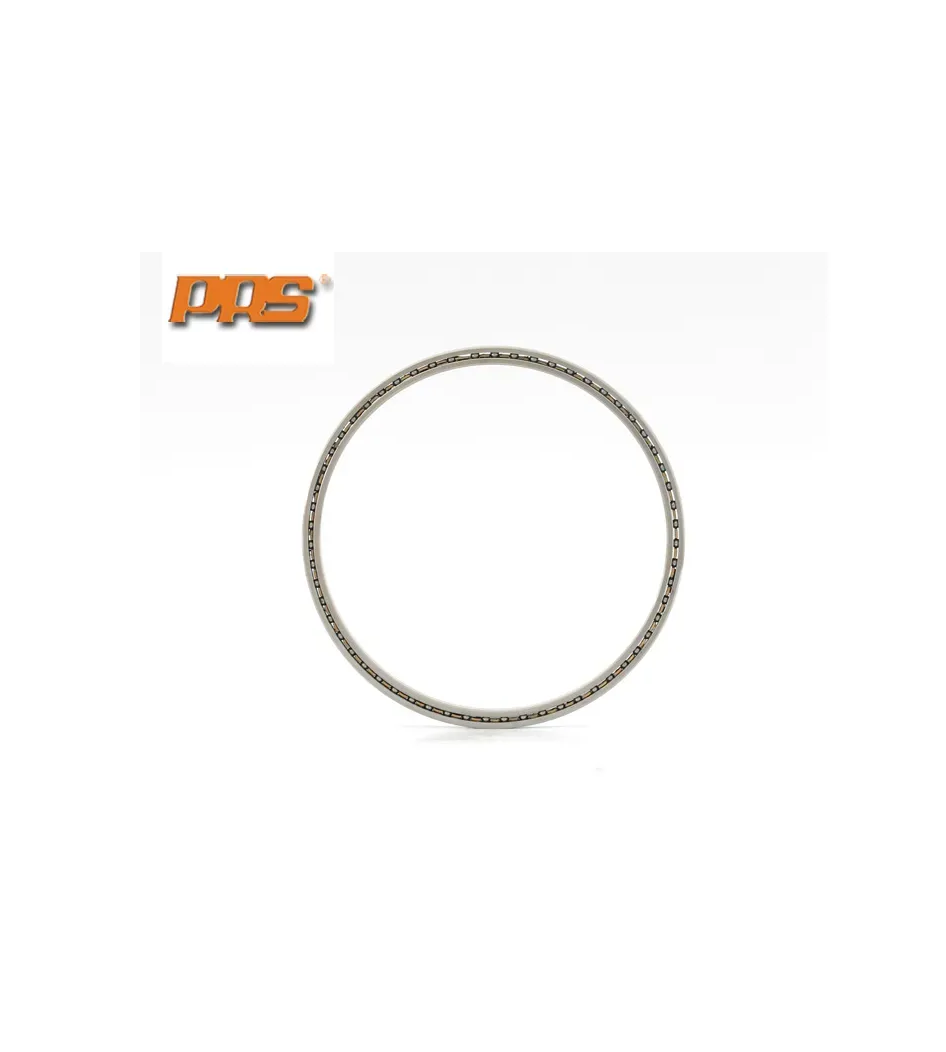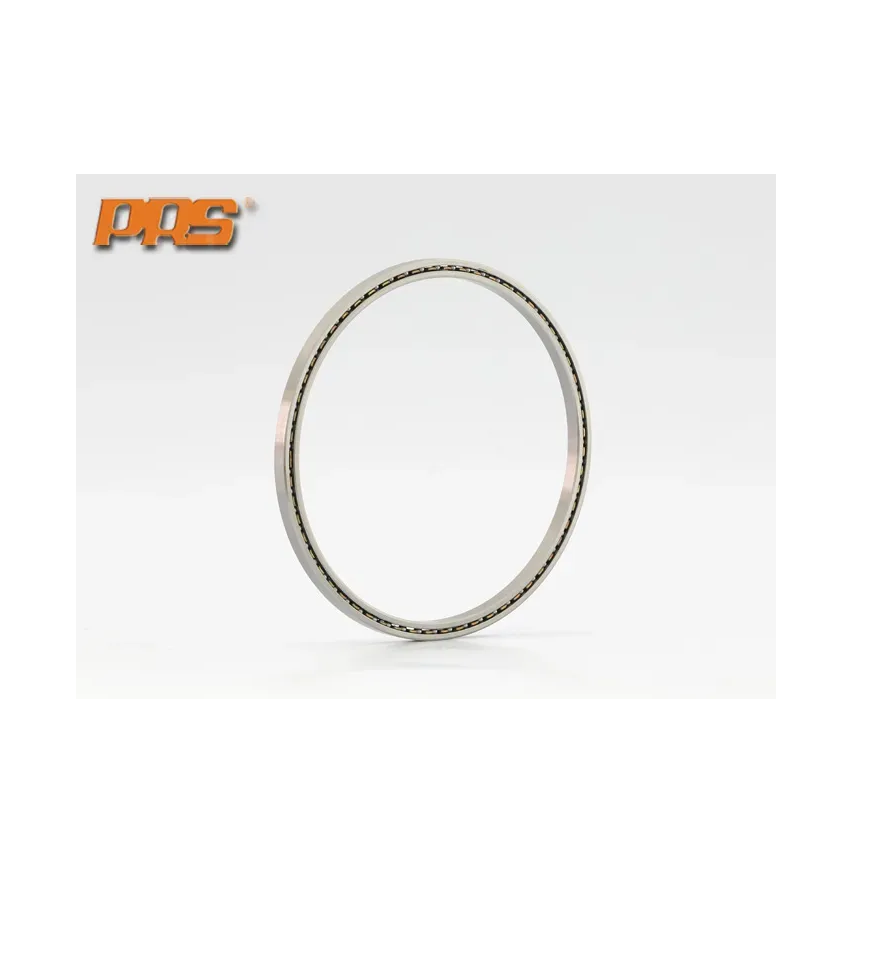Mail Us: [email protected] [email protected]
Call For Us: +86 18003790744 +86 18003790601 +86 18003797770

Onze dunne sectie lagers onderscheiden zich door hun compacte doorsnede, een kenmerk dat ze bij uitstek geschikt maakt voor toepassingen waar de ruimte beperkt is, waardoor ze naadloos in ontwerpen kunnen worden geïntegreerd zonder in te boeten op functionaliteit of prestaties.

In het algemeen is PRS een bedrijf dat zich richt op slanke afdeling lagers die in staat zijn om zware lasten comfortabel te dragen. Dergelijke lagers hebben stevige structuren en beoordelingen van hoge draagcapaciteit, waardoor ze kunnen worden gebruikt in industrieën zoals de transportbandsystemenindustrie of zelfs voor grote machines. Met PRS betekent het dat wanneer zij zeggen dat uw apparatuur goed en effectief zal werken, dit precies is wat er zal gebeuren, omdat hun woorden geen lege beloftes waren, maar eerder gebaseerd op zekerheid, zelfs onder zware werkomstandigheden!

PRS dunne sectielagers zijn gemaakt om energie te besparen, wat op zijn beurt de hoeveelheid verbruikte energie vermindert en zo kosten bespaart. De materialen die in onze lagers worden gebruikt, zijn licht en hun ontwerp is geoptimaliseerd om wrijving te verminderen, zodat uw machines bij lagere temperaturen kunnen draaien terwijl ze efficiënter werken. Kies voor PRS wanneer u op zoek bent naar dunne sectielagers die u helpen op een milieuvriendelijke manier te opereren.

Door PRS afgesloten dunne looplagers kunnen langer meegaan en minder onderhoud vereisen. De bescherming tegen verontreiniging wordt geboden door robuuste afdichtingen die de levensduur van smeermiddelen verlengen en zo de stilstandstijden en de kosten voor onderhoud verminderen. Of het nu gaat om de automobielindustrie of ruimtevaart, wanneer schoonheid het belangrijkst is, zullen deze betrouwbare componenten aan al uw verwachtingen voldoen.

PRS is hier om u te voorzien van op maat gemaakte dunne sectie lagers die zijn gemaakt voor uw specifieke toepassing. Ons team werkt samen met u tijdens het proces om te identificeren wat precies nodig is, inclusief boringgroottes, buitendiameters en speling, naast andere kenmerken zoals smeermogelijkheden. Vertrouw op ons bij PRS, want we zorgen altijd voor precisie-engineering in elk ontwerp van onze producten voor de beste prestaties en duurzaamheid in de loop van de tijd.

Luoyang Precision Precision Bearing Co., Ltd. is een hightech onderneming die gespecialiseerd in de productie van precisielagers en onderzoek en ontwikkeling, Ons bedrijf beslaat 15.000 vierkante meter. Sinds de in 2003 opgericht , heeft ons bedrijf zich snel ontwikkeld met 145 werknemers en 35 technici van verschillende soorten. Verscheidene professionele apparatuur en testinstrumenten 135 sets, de totale investering van vaste activa van meer dan 80 miljoen yuan.
Onze belangrijkste producten zijn onder meer kruiscilinderrollagers, kruisconicrollagers, dunne kogellagers, draaitafellagers, hoogprecise draaibaren, enz. De nauwkeurigheid kan P4, P2-niveau bereiken. Wij zijn vastbesloten om "professionele, betrouwbare en stabiele" producten en diensten voor wereldwijde kopers.
PRS-lagers zijn gemaakt van hoogwaardig staal en hoogwaardige polymeren, waardoor uitzonderlijke duurzaamheid en levensduur worden gewaarborgd. Onze toewijding aan het gebruik van superieure materialen betekent dat onze lagers de zwaarste omstandigheden kunnen weerstaan, waardoor ze jarenlang betrouwbare prestaties kunnen leveren.
PRS-lagers zijn ontworpen met het oog op energie-efficiëntie en verminderen wrijving en warmteopwekking, wat leidt tot een lager energieverbruik. Dit draagt niet alleen bij tot de verlaging van de operationele kosten, maar draagt ook bij tot een duurzamere en milieuvriendelijker exploitatie.
Elk PRS-lagertje ondergaat strenge, nauwkeurige technische processen, waardoor producten worden geproduceerd die voldoen aan de hoogste industriële normen. Deze nauwgezette aandacht voor detail zorgt ervoor dat de machines perfect passen en soepel werken, waardoor slijtage en slijtage tot een minimum worden beperkt en de levensduur van uw machines wordt verlengd.
Bij PRS zijn we trots op uitstekende klantenservice. Ons team van experts is altijd klaar om u te helpen bij de productselectie, technische ondersteuning en naverkoopservice, zodat u de best mogelijke ervaring met onze producten krijgt.
Dunne sectie lagers zijn een type rollend element lager dat is ontworpen voor toepassingen waar de ruimte beperkt is. Ze hebben een verlaagde sectiehoogte in vergelijking met standaardlagers, wat zorgt voor een grotere speling tussen het lager en de omliggende componenten.
Dunne sectie lagers hebben een kleinere totale hoogte dan standaardlagers, wat ze ideaal maakt voor gebruik in krappe ruimtes of waar gewichtsreductie een prioriteit is. Ze hebben doorgaans een hogere draagcapaciteit per eenheid volume vanwege hun ontwerp.
Dunne sectie lagers zijn doorgaans gemaakt van hoogwaardig staal voor de ringen en rollen, met een verscheidenheid aan cage-materialen beschikbaar zoals messing, fenolhars of polyamide.
